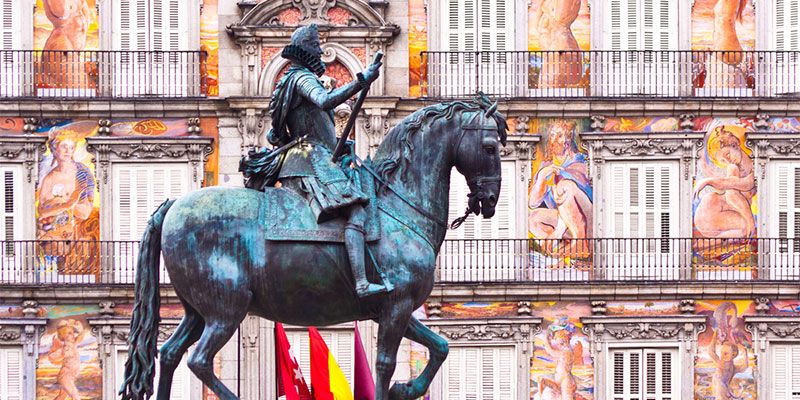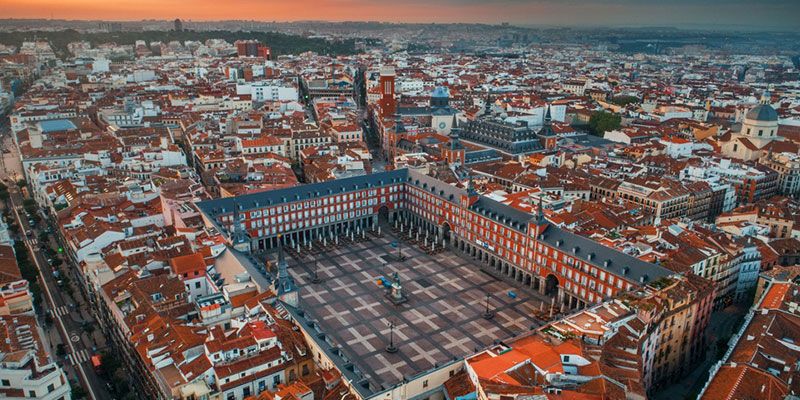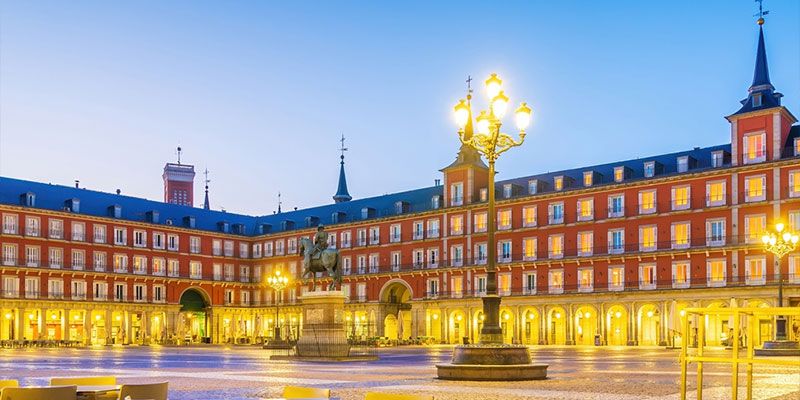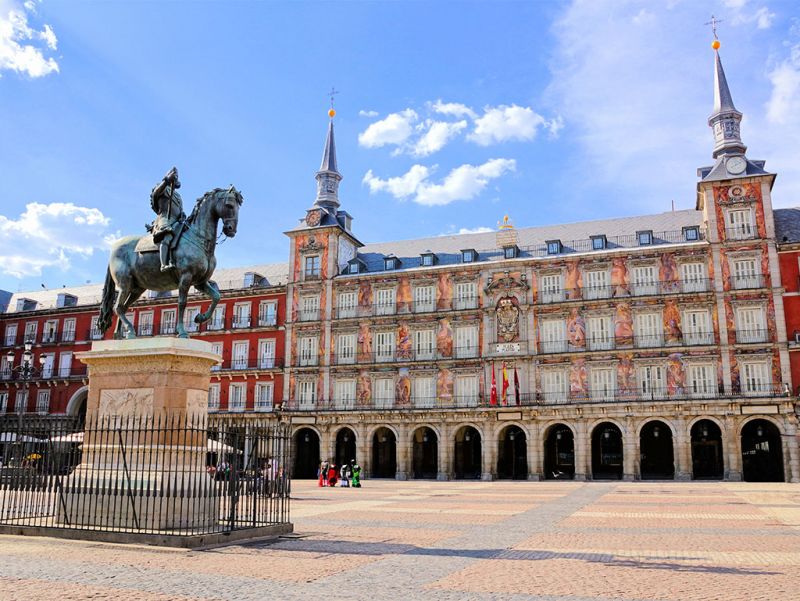Plaza Mayor
Discover the historic charm of Plaza Mayor Madrid - a captivating square nestled in the heart of the city.Uncover the hidden gems and local traditions that bring Plaza Mayor Madrid to life. Get ready to be enchanted by Plaza Mayor Madrid's timeless allure.
Nestled in the heart of Madrid, Plaza Mayor stands as a timeless symbol of the city's vibrant history and cultural heritage. This magnificent square, with its grand architectural landmarks and lively atmosphere, is a must-visit for any traveler exploring the Spanish capital. As you step into Plaza Mayor, you are transported back in time, surrounded by centuries-old buildings and a palpable sense of history.
Historical Background of Plaza Mayor
Plaza Mayor Madrid boasts a captivating history that spans over four centuries. Originally known as the "Plaza del Arrabal," it was a bustling marketplace on the city's outskirts. In the 17th century, King Philip III commissioned the square's transformation into a grand plaza, designed by renowned architect Juan Gómez de Mora. Throughout history, Plaza Mayor has witnessed royal ceremonies, bullfights, markets, and even public executions. Its central location made it a hub for social and cultural activities, attracting locals and visitors alike.

Architectural Highlights of Plaza Mayor
The architectural splendor of Plaza Mayor Madrid is a sight to behold. The square is enclosed by elegant, three-story residential buildings adorned with stunning balconies and charming frescoes. The most prominent feature of Plaza Mayor is the Casa de la Panadería, a majestic building with an intricate façade that showcases frescoes depicting mythological scenes. The Arco de Cuchilleros, a narrow alleyway with a series of steps, leads to the heart of Plaza Mayor, adding to its unique charm. The architectural harmony of Plaza Mayor is a testament to the Spanish Baroque style and the skill of the architects who brought this grand vision to life.

A Guide to the Plaza Mayor's Hidden Gems
While the grandeur of Plaza Mayor Madrid is evident, there are also hidden gems waiting to be discovered within its walls. One such gem is the Mercado de San Miguel, a vibrant food market where you can indulge in a variety of Spanish delicacies. From freshly caught seafood to traditional tapas and delectable desserts, the market offers a sensory feast for food enthusiasts. Another hidden gem is the Casa de la Carnicería, a former meat market that has been transformed into a cultural center. Here, you can explore art exhibitions, attend concerts, or simply soak in the artistic ambiance.
For those seeking unique shopping experiences, Plaza Mayor is home to a plethora of traditional shops selling handmade crafts, leather goods, and souvenirs. Step into these charming establishments and immerse yourself in the rich craftsmanship and traditions of Spain.

Famous Events Held at Plaza Mayor Madrid
Plaza Mayor Madrid has been a witness to numerous historic events and vibrant celebrations throughout the years. One of the most famous events held at the square is the annual Christmas market, known as "Feria de Navidad." During this festive season, the square is adorned with twinkling lights, and stalls selling handicrafts, sweets, and decorations fill the square. Another highlight is the "San Isidro Festival," a week-long celebration dedicated to Madrid's patron saint, featuring traditional music, dance, and bullfights. Plaza Mayor also hosts concerts, art exhibitions, and cultural festivals, adding to its dynamic atmosphere throughout the year.
Insider Tips for Visiting Plaza Mayor Madrid
To make the most of your visit to Plaza Mayor Madrid, here are some insider tips to keep in mind. First, arrive early in the morning to experience the square without the crowds and take stunning photographs. Second, explore the narrow side streets surrounding Plaza Mayor, known as "los pasadizos," which are filled with charming cafes and quaint shops. Third, climb to the rooftop terrace of the Casa de la Panadería for panoramic views of the square and the city beyond. Finally, consider joining a guided tour to gain deeper insights into the history and hidden stories of the Plaza Mayor.

Best Time to Visit Plaza Mayor Madrid
Plaza Mayor Madrid is a captivating destination throughout the year, but the best time to visit depends on your preferences. Spring and autumn offer pleasant temperatures, making it ideal for exploring the square and its surroundings on foot. Summer brings warm weather and a lively atmosphere, but it can also be crowded with tourists. If you are a fan of festive celebrations, visiting during the Christmas season allows you to experience the magical atmosphere of the Feria de Navidad. Regardless of the season, Plaza Mayor Madrid will captivate you with its timeless charm and vibrant energy.
In conclusion, Plaza Mayor Madrid is a treasure trove of history, culture, and gastronomy that will enchant every visitor. Its grand architecture, hidden gems, local cuisines, and famous events make it a truly unique destination in the heart of the Spanish capital. Whether you are an architecture enthusiast, a food lover, or a history buff, Plaza Mayor has something to offer everyone. So don't wait up and book your Spain tour with us to embark on an unforgettable journey through the hidden gems of Plaza Mayor Madrid.
People Also Ask:
1. When was Plaza Mayor built?
The Plaza Mayor in Madrid was built between 1617 and 1619, but in 1790 modifications were made after the great fire.
2. Where is Plaza Mayor in Spain?
Plaza Mayor is nestled in the heart of Madrid.
3. Why is Plaza Mayor important?
The Plaza Mayor is important as it boasts a captivating history that spans over four centuries. It was a bustling marketplace on the city's outskirts until its transformation into a grand plaza. Throughout history, Plaza Mayor has witnessed royal ceremonies, bullfights, markets, and even public executions. Its central location made it a hub for social and cultural activities, attracting locals and visitors alike.
4. Who built the Plaza Mayor?
In the 17th century, King Philip III commissioned the square's transformation into a grand plaza, designed by renowned architect Juan Gómez de Mora.
